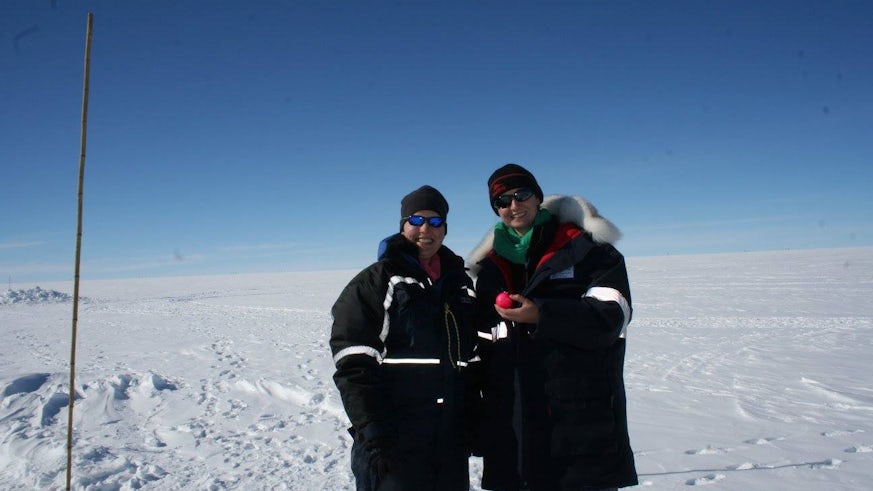Understanding ice dynamics of Greenland
13 July 2016

Dr Liz Bagshaw, a lecturer at Cardiff University’s School of Earth and Environmental Sciences, recently returned from fieldwork at the Northeast Greenland Ice Stream where she is involved in a project to understand ice which is moving at up to 20cm per day.
Dr Bagshaw has undertaken twelve seasons of fieldwork in Antarctica and Greenland. This year, she travelled to the north-eastern sector of the Greenland Ice Sheet, where the East Greenland Ice-core Project (EastGRIP) plans to retrieve a 2.5km ice core by drilling to the base of the ice stream.
This international Danish-led project aims to understand ice dynamics in this rapidly moving sector of the Greenland ice sheet, and collect high resolution climate data from the past 25 000 years. As part of the project, Dr Bagshaw and a team of collaborators from the University of Bristol and London South Bank University have developed wireless ETracer sensors, which measure temperature, pressure and electrical conductivity on the ice sheet.
The small, low-cost sensors collect data and wirelessly transmit their results via radio signals. In order to test the sensors’ capabilities for measuring physical properties and sending data through metres of snow, they were deployed in boreholes.

On this fieldtrip, Dr Bagshaw and her collaborators were able to receive data from as far as 60 metres below the snow. Several ETracers were left in 12 metre deep boreholes to collect further data, which is continuously being sent to receivers on the surface. They hope to have collected enough data by late August to interpret the processes and changes occurring in this extreme environment.
To find out more about the EastGRIP project and view their diary of life in the fieldcamp, please visit their website.